Behold the Secret Wonders of Myrtle Beach (Really!)
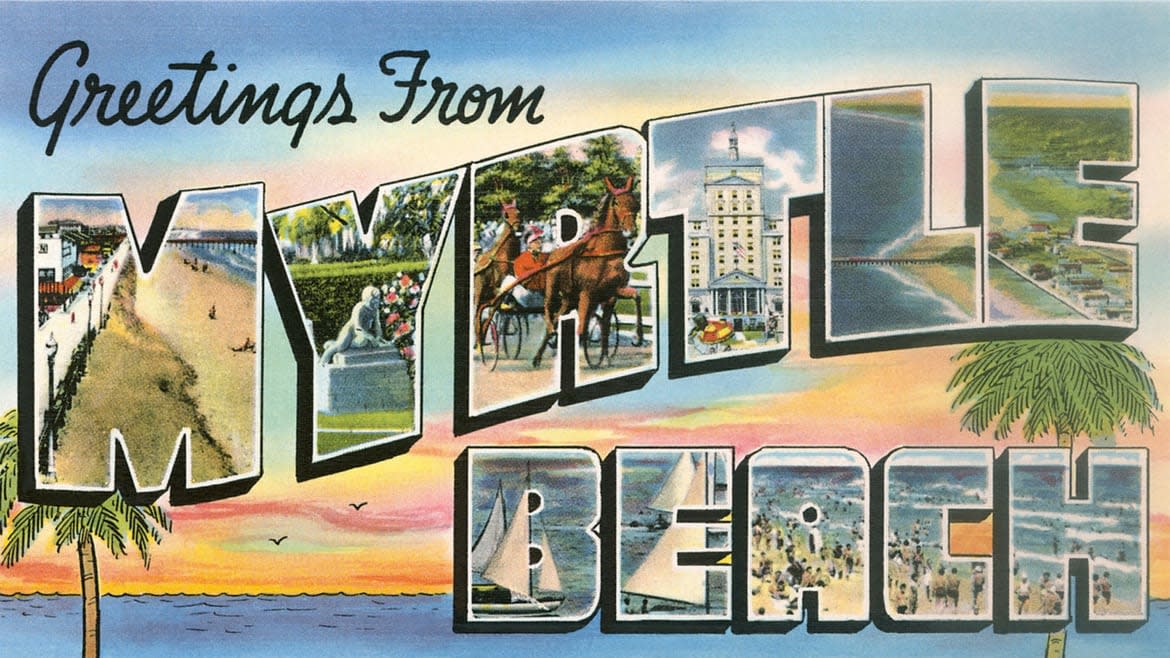
What can you do in Myrtle Beach on a rainy day? (Honeymooners and others similarly inclined can move to the next question.) What happens when you get a bad sunburn on day one of your vacation and don’t want to climb the walls of your hotel on day two? Or let’s say you’re no fan of the beach or golf or even mini-golf, and yet, for whatever reason, you find yourself at loose ends in this South Carolina coastal town. What do you do then? Where can you go?
Rest easy, bewildered traveler: There is hope.
If you grew up in the Mid-South, Myrtle Beach was your Mecca. You begged your parents to take you there for summer vacation. When you graduated from high school or split for spring break in college, the South Carolina resort town was where you headed to cut loose. It had everything: the Pavilion with its dreamy merry-go-round and a dance floor for shagging to Beach Music, miles of beach, Ocean Drive to cruise (preferably in a ragtop), and clement weather, with surf never as chilling as Yankee beaches nor sun as blistering as Florida’s. If you grew up and became a golfer, Myrtle Beach and its roughly 100 courses had you for life.
Just don’t get too nostalgic. Because what you loved as a child, all the landmarks and atmosphere, the sense that anything could happen—everything that kept the place alive in your mind, a lot of that is long gone. In 2006, for example, its owners demolished the beloved Pavilion and replaced it with… a vacant lot.
Not that Myrtle Beach needs your nostalgia. It endures because families keep coming, no matter what they remember, and new families keep showing up. Couples still go there to honeymoon. Conventioneers keep coming back. Call it commercial, call it gaudy even, but Myrtle Beach is successful because it is predictable and comfortable and… nice—family-friendly, if you will. It’s a place for people who want to know what they’re getting before they go and don’t want any ugly surprises. You won’t see pole dancing or even a tattoo parlor unless you know where to look. This is not hypocrisy. This is location. Myrtle Beach is in one of the reddest red states, with the mores to go with it. Until early in this century, it was still illegal to get a tattoo in South Carolina, and it’s still illegal to get tattoos on your face, neck, or head.
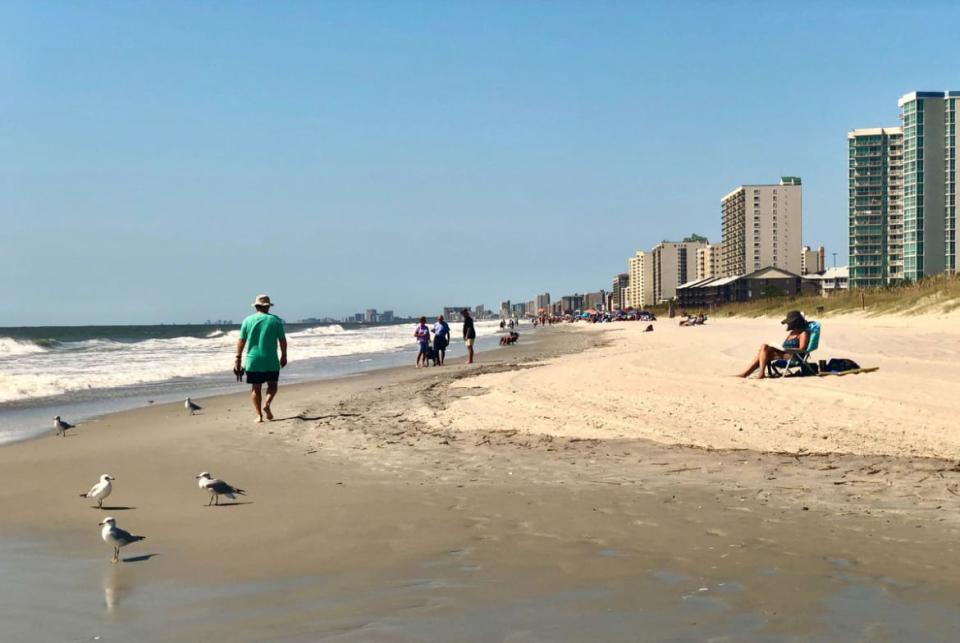
But those well-hidden tattoo parlors have a point to make: The more you dig beneath the surface, the more interesting Myrtle Beach becomes. Yes, it is mostly about playing in the sand and surf and golfing, but if that’s not your thing, you just need to look a little harder for your fun. Trust me, it’s there.
In three days in Myrtle Beach, I spent exactly 20 minutes walking the beach (I know because I plugged a parking meter). The rest of the time, I jumped in the car and went exploring. And by the time I had to leave, I still had things on my “to do” list.
Here’s what I crammed in:
Start by heading up to North Myrtle Beach, where you can watch shag dancing at Fat Harold’s, a club that’s the unofficial world headquarters of shagging, with two dance floors and walls of fame filled with photos of disc jockeys and bygone wizards of those waxed floors.
Born in the Carolinas, The Shag has been around since at least the ’30s. It came out of swing dancing, and since the ’50s and ’60s, its musical accompaniment is almost always soul music. As for the dancing itself, don’t expect many wild sling-your-partner jitterbug moves. The Shag’s steps are more subtle, more fluid, with most of the motion below the waist. Imagine a couple moving in a space about the size of a diving board… that’s covered in ice. Now imagine them doing it gracefully in time to music: “Little dances that look so neat,” as the song goes. It’s a beautiful thing to see.
I hit Fat Harold’s on a Friday night after 9 p.m., and the packed house and crowded dance floor looked to be 50-plus in age, ranging from limber to spry. There were a few dancers out there doing the don’t-look-at-me shuffle, but only a few. For the most part, this crowd knew its stuff. I don’t know of many pleasures greater than watching good dancers who so obviously love what they’re doing.
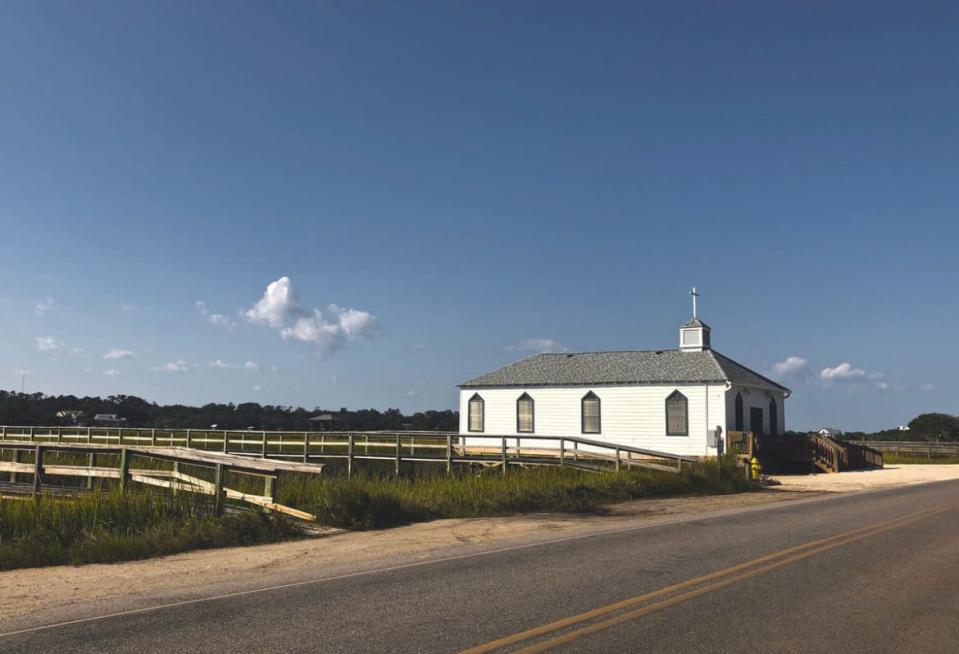
If you don’t like clubs, spend the day cruising nearby towns. Murrell's Inlet and Pawley's Island are peaceful one- and-two story ocean towns filled with single-family rentals. Or follow the Waccamaw River inland a few miles to Conway. One of the oldest cities in the U.S., it’s not a great rainy day bet, because when you’re in Conway, you’ll want to walk to soak up the quiet charm of a small Southern city (hometown of both author William Gibson and Vanna White) full of exquisitely preserved old homes, churches and other historical buildings (city hall was designed by South Carolina native Robert Mills, who designed the Washington Monument). A newly refurbished riverfront boardwalk also begs you to stroll. And the more you walk, the more questions will come. Why, for example, are so many buildings in the center of town made of brick? Because the business district burned in the early 20th century, and when they rebuilt, they took the precaution of using more fire-resistant material. You may also see lines drawn on the road and along the sides of buildings near the river. That’s how far the water rose when the town flooded in 2018 after Hurricane Florence. Conway’s beauty came at a price.
And while I know that maybe no one but me goes hunting for museums on a beach vacation, I’d still urge you to check out Conway’s Horry County Museum, where the permanent exhibit on the history of Myrtle Beach alone is worth the visit. The room-sized display, complete with a vitrine showcasing a beautiful pair of robin’s-egg-blue men’s dancing pumps, provides a lucid history of how a stretch of beach that no one knew what to do with bloomed into one of America’s biggest tourist spots in less than a century. There's also a thorough, and thoroughly depressing, look at the region’s segregated era when African-Americans could work in Myrtle Beach but if they wanted to dine out, party, or swim, they were confined to nearby all-black Atlantic Beach, aka the Black Pearl. Until the ’60s, a rope stretched out in the ocean to separate black and white bathers, even in the surf.
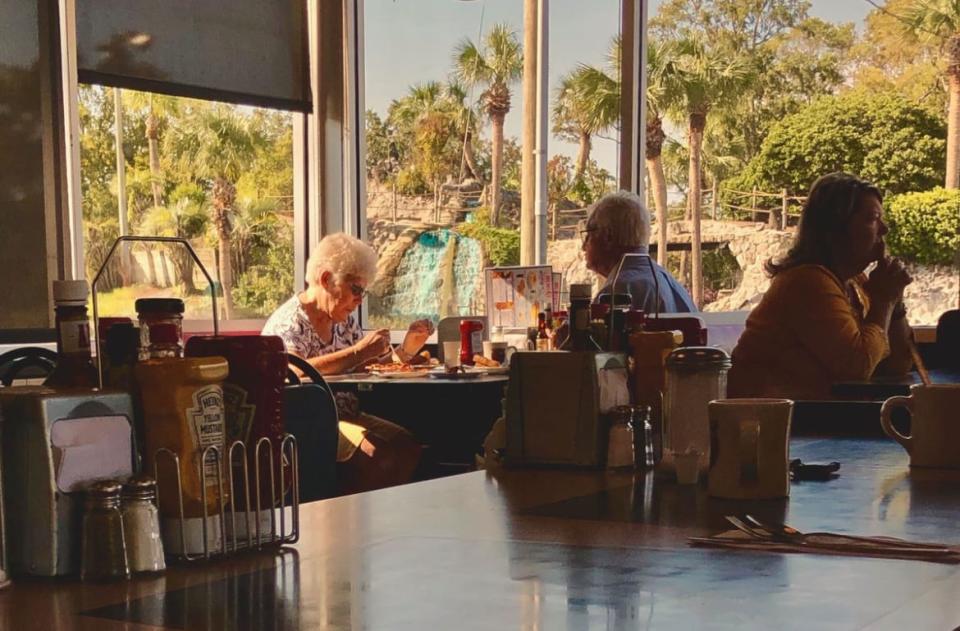
As mentioned earlier, Myrtle Beach is not too concerned with its own history, but there is a wonderful exception: the Historic Myrtle Beach Colored School Museum and Education Center. Part of the building is devoted to a preschool center and adult education. Then there’s a museum that highlights achievements and inventions by African-Americans. And there’s a room recreating a classroom in the Colored School full of secondhand textbooks, secondhand desks, and other used and worn-out equipment that Myrtle Beach’s black students used once local white kids were done with them. Former students of the school conduct the tours, and they are full of fascinating lore. For example, African-American boys at the school often fell behind and did not graduate because they were involuntarily pulled from class every day and taken to caddy on the all-white golf courses. When the museum was founded, its former students were adamant that Colored be part of the museum’s name, because that’s historically accurate and because it so painfully evokes the Jim Crow era in which the school operated until it was shut down in 1953.
While you’re touring the Colored School Museum, you’re likely to hear about Charlie’s Place, too. No one knows much about Charlie Fitzgerald before he showed up in Myrtle Beach in the ’30s, except that he was from New York and his real name was Lucius Drucker. What history does record is that history from the ’30s through his death in 1955, he ran a nightclub in the black part of town where he somehow managed to cater to both whites and blacks (the club itself stayed open into the ’60s). The audience was there because they all loved the same music and were young enough to still be able to believe that nothing mattered more than that. It didn’t hurt that they got to hear the likes of Billie Holiday, Ray Charles, James Brown, and Marvin Gaye. Charlie got to book the best because when the best played in Myrtle Beach, they had nowhere to go after wrapping up their supper clubs gigs, at least if they were black, so they went to Charlie’s.
The Klan did show up once, in 1950. They beat Charlie within an inch of his life and trashed his club. There was also some shooting, but only one man got shot, and that was a klansman. When they took his robe and hood off, he was still wearing his Conway policeman’s uniform. After that, nobody bothered Charlie’s Place. Again to its credit, the city is in the midst of preserving what remains of the nightclub and motel.
Two or three people mentioned Charlie’s to me while I was there (it’s also the subject of an Emmy-award winning documentary), and all of them, black and white alike, told the story with a hint of amazement in their voices. It was a complicated tale, where the impossible became real, if only in one small corner of the world. None of us could do much more than marvel.
Race issues, of course, thread their way through every aspect and angle of Southern life and history, even in a bucolic resort town. The race-related event that opened the door to tourism a century ago was the collapse of the region’s rice-growing industry, which went under after the Civil War because it couldn’t stay profitable without slave labor. Toss in a couple of devastating hurricanes, and the rice plantations subsided into the coastal marshes, leaving barely a trace that they had existed.
It’s hard to imagine those plantations today amid all the development of the coast, but if you drive 20 minutes south of Myrtle Beach, you’ll find Brookgreen Gardens, a vast open-air sculpture and botanical garden with its own animal preserve (if zoos give you qualms, know that these animals and birds, all native to the South, are rescues incapable of surviving in the wild). There are also boat tours of the marshes and lowlands that were once home to those rice plantations that made a handful of South Carolina landowners among the nation’s richest people. The boat tour allows plenty of opportunity for schadenfreude since all those once mighty landowners have been brought low by time and circumstance and their holdings have subsided into their natural state.
Brookgreen Gardens was created in 1931 by the scholar and philanthropist Archer Huntington and his wife, the noted sculptor Anna Hyatt Huntington, as a 9,127-acre display area for her art. Other sculptors’ works have been added over time. The botanical gardens that serve as a setting for the figurative sculptures showcase plants of the Southeast and exotics. It’s a beautiful, walkable place, and a fine antidote to the commercialization of other parts of the coast.
But by no means should you stop there. Cross the highway to Huntington Beach State Park, which besides its fine, undeveloped beaches, public campsites, and maritime forest also contains Atalaya Castle, the Huntington’s southern home. Designed by Huntington and built to loosely resemble a Moorish castle or Spanish fort, Atalaya is a weird but delightful alternative to most rich people’s mansions. It wasn’t designed for entertaining or showing off. It was meant as a getaway and a place to get serious work done. There are no spacious guest quarters or ballrooms or immense dining rooms. Instead, the now-bare rooms, all built around a breathtaking central courtyard, reveal a more utilitarian impulse: his roomy study, her enormous art studio. The only evidence of wealthy excess is a multi-headed shower stall that the ahead-of-his-time Huntington designed for himself. You’re more likely to admire his ingenuity than scoff at his indulgence.
The Huntingtons were among numerous rich people who swooped down upon South Carolina around the turn of the last century and began buying up abandoned plantation properties on the coast. They wanted the land as hunting preserves. And no one did this on a grander scale than the financier and presidential adviser Bernard Baruch.
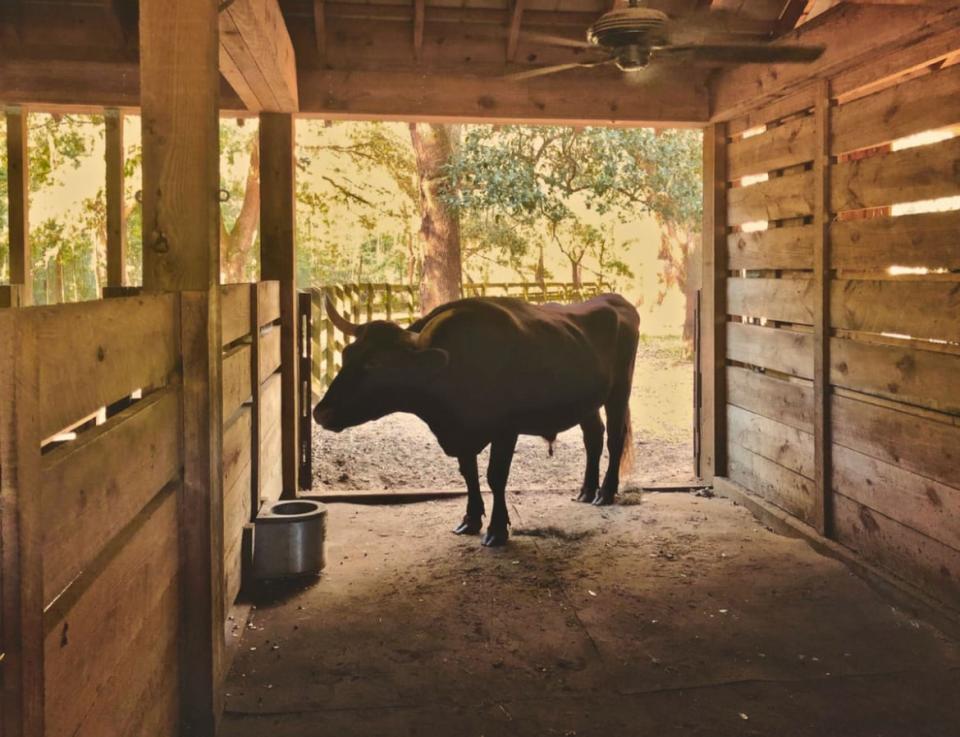
Hobcaw Barony, Baruch’s 16,000-acre estate just a few miles south of Brookgreen Gardens, is controlled by a foundation created by his oldest daughter, Belle. Probably the biggest chunk of wilderness left on the South Carolina coast, it contains research facilities for both the University of South Carolina and Clemson University, and it is open to the public for guided tours.
You can explore the grounds from a tour bus and visit the Baruch mansion, which reminded me of the Franklin D. Roosevelt home in Hyde Park, N.Y. Both were homes of the wealthy, but their inhabitants plainly prized comfort over ostentatious luxury. Belle Baruch especially was a far-sighted woman who valued the property not just for the hunting, riding, and fishing it afforded, but also for its worth as virtually undisturbed wilderness. You come away from these homes liking their former inhabitants more, not less. Bonus for history fans: if you want to use the toilet where Churchill and FDR sat when they visited, the tour guide is cool with that.
Belle Baruch was absolutely right: The real appeal of Hobcaw Barony is its natural state. For while it is tended (an effort is underway to replenish the stock of longleaf pines, once decimated by over-foresting), it is not manicured. This is surely the best chance you’ll ever have to see what coastal South Carolina looked like before humans arrived en masse.
For those who care little about history or eco-tourism, stay in Myrtle Beach and drive and walk through the Market Common District on the site once occupied by a U.S. Air Force base.
Designed according to New Urbanism principles, the mixed-use Market Common’s 114 acres blend upscale shops, restaurants, single-family residences and apartments (many above the commercial establishments), stand-alone houses, and green space in an environment where cars are allowed but foot traffic is imperative. Building styles blend but they aren’t cookie-cutter, and in adjacent developments the housing styles that predominate borrow heavily from domestic Charleston architecture. You could do worse. In a place where you don’t expect thoughtful, innovative architecture or design, Market Common is a happy surprise.
So you’re stuck in Myrtle Beach? I’m sorry, I just don’t see the problem. In fact, I envy you.
PS: Good places to eat: The Parson’s Table in Little River, Hook and Barrel and Sea Captain’s House in Myrtle Beach, and Wicked Tuna in Murrell’s Inlet.
Editor's Note: This is the latest installment of our series on underrated destinations, It's Still a Big World.
Get our top stories in your inbox every day. Sign up now!
Daily Beast Membership: Beast Inside goes deeper on the stories that matter to you. Learn more.

